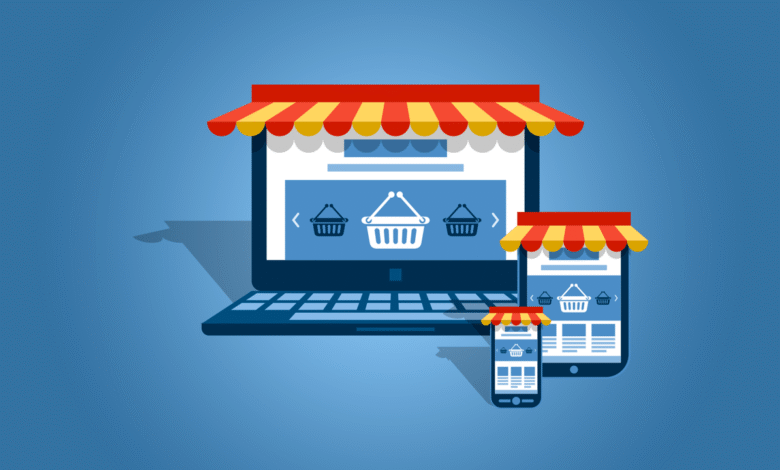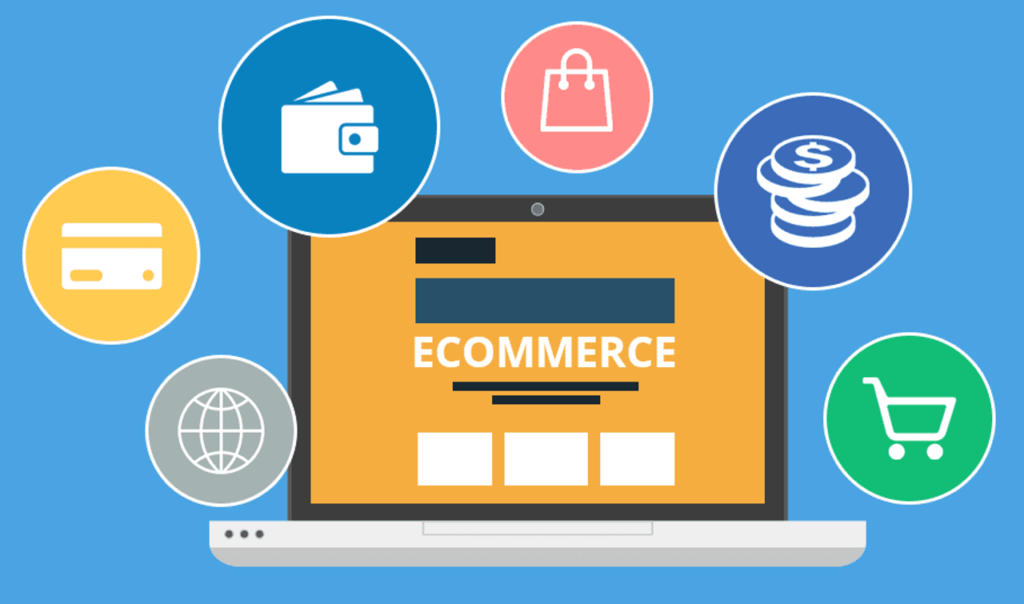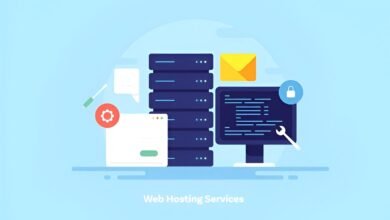How to Build an E-Commerce Website: A Guide to Online Selling

In today’s digital age, having an online presence is crucial for businesses of all sizes. If you’re looking to start or expand your online business, creating an e-commerce website is a fundamental step. This comprehensive guide will walk you through the process of building an e-commerce website, from inception to launch.
Read More: The Future of E-Commerce in the United Kingdom
How to Build an E-Commerce Website
In the digital era, the significance of having an online presence cannot be overstated. An e-commerce website is the gateway to expanding your business’s reach, making it accessible to a global audience. This guide aims to provide a step-by-step walkthrough, ensuring that you can create a successful e-commerce website that not only exists but thrives in the competitive online marketplace.
Choosing the Right E-Commerce Platform

Selecting the appropriate e-commerce platform is a pivotal decision that forms the foundation of your online store. Here, we’ll delve into the various platforms available and guide you through making an informed choice.
Shopify, WooCommerce, and BigCommerce are three of the most popular e-commerce platforms. Each comes with its unique set of features and pricing structures. Shopify is renowned for its user-friendliness and scalability, making it ideal for beginners. WooCommerce, as a plugin for WordPress, offers flexibility and customization options. BigCommerce is robust and suitable for larger enterprises.
Consider factors such as the size of your business, budget, and the specific features you require when making your selection. Your chosen platform will shape your website’s structure and functionality.
Selecting a Domain Name and Hosting
Your domain name is your digital identity, the address where customers will find your online store. It’s essential to choose a domain name that is memorable, relevant to your business, and easy to spell. Once you have your domain name, you need to pair it with a reliable hosting provider. Your hosting service will affect your website’s performance, loading speed, and security. Look for hosting providers that offer 24/7 support, robust security features, and scalability to accommodate potential growth.
Designing Your E-Commerce Website
Choosing a Responsive Design
With mobile usage surpassing desktop, having a responsive design is no longer optional. A responsive website adapts seamlessly to various screen sizes, ensuring that your customers can browse and shop on your site, whether they’re using a smartphone, tablet, or desktop computer.
Creating User-Friendly Navigation
Intuitive navigation is key to keeping visitors engaged and helping them find what they need quickly. Implement clear menus and categorize your products logically. Consider including a search bar to further enhance the user experience.
Incorporating High-Quality Images and Product Descriptions
Visual appeal plays a significant role in e-commerce success. High-resolution images of your products from multiple angles help customers get a clear view of what they’re buying. Pair these images with detailed product descriptions, including specifications, features, and benefits. Transparency in your product listings builds trust and helps customers make informed decisions.
Setting Up Payment Gateways
A seamless checkout process is critical to converting visitors into customers. Integration with secure payment gateways is a must. Offer a variety of payment options to cater to a broader audience. Popular choices include PayPal, credit/debit card processing, and digital wallets like Apple Pay and Google Wallet. Prioritize security to safeguard sensitive customer data and build trust.
Adding Products and Categories
Organize your products into logical categories and subcategories. This helps visitors quickly find what they’re looking for. Each product listing should include high-quality images, detailed descriptions, pricing information, and availability status. Creating an easy-to-navigate product catalog is fundamental to a successful e-commerce website.
Optimizing for SEO

Keyword Research
To attract organic traffic, it’s crucial to conduct thorough keyword research. Identify keywords relevant to your products and industry using tools like Google Keyword Planner. These keywords will inform your content creation and SEO strategy.
On-Page SEO Optimization
Optimize each product page for search engines. Incorporate relevant keywords into your product titles, descriptions, meta tags, and alt tags for images. Create SEO-friendly URLs that provide insight into the page’s content. Effective on-page SEO can significantly improve your website’s visibility in search engine results.
Creating Quality Content
Blogging and creating informative content can enhance your website’s SEO and engage visitors. Share valuable insights, how-to guides, and industry-related news. High-quality content not only attracts organic traffic but also establishes your brand as an authority in your niche.
Implementing Security Measures
Security is paramount in e-commerce. Utilize SSL certificates to encrypt data transmitted between your website and customers. Regularly update your software and plugins to patch security vulnerabilities. Conduct security audits to identify and mitigate potential threats. A secure website instills confidence in customers, encouraging them to shop with peace of mind.
Testing Your E-Commerce Website
Before launching, conduct comprehensive testing to ensure your website functions flawlessly. Test the website’s compatibility with various browsers and devices. Verify that all links work correctly, forms are functional, and the checkout process is smooth. Address any issues that arise during testing to provide a positive user experience from the start.
Launching Your E-Commerce Store
With rigorous testing complete, it’s time to launch your e-commerce store. Announce your grand opening on social media, through email marketing, and on your website itself. Create excitement around your brand and offerings to attract those initial customers.
Marketing and Promotion
Social Media Marketing
Leverage the power of social media to connect with your target audience. Create engaging content, run targeted ad campaigns, and interact with your followers. Social media platforms provide an excellent opportunity to build a loyal customer base.
Email Marketing
Build an email list and send regular newsletters to your subscribers. Share promotions, product updates, and valuable content. Email marketing is an effective way to nurture customer relationships and drive repeat business.
Pay-Per-Click Advertising
Consider using pay-per-click (PPC) advertising on platforms like Google Ads. PPC allows you to bid on keywords and display ads to a highly targeted audience. When done effectively, PPC can drive traffic and conversions to your e-commerce website.
Managing Orders and Inventory
Efficient order management and inventory tracking are essential to keep your operations running smoothly. Implement an inventory system that tracks stock levels in real time to prevent overstocking or understocking. Use order management software to streamline the processing of customer orders, ensuring prompt fulfillment and delivery.
Monitoring Analytics

Use tools like Google Analytics to gain insights into your website’s performance. Track metrics such as website traffic, conversion rates, and user behavior. Analyzing this data allows you to make informed decisions about your marketing and website optimization strategies.
Customer Support and Feedback
Outstanding customer support is key to customer satisfaction and retention. Offer multiple support channels, such as live chat, email, and phone support, to address customer inquiries promptly. Encourage feedback from customers to gain insights into their experiences and make improvements where necessary.
Conclusion
Creating an e-commerce website is not just about building a digital storefront; it’s about crafting an exceptional online shopping experience for your customers. By following this comprehensive guide, you’ll be well-equipped to build, launch, and manage a successful e-commerce website that not only meets your business goals but exceeds them.
Read More: Web Development Services in the UK: Build Your Online Presence
FAQs
- How long does it take to build an e-commerce website? The time it takes to build an e-commerce website can vary significantly. It depends on factors such as the complexity of your site, the features you require, and the resources you have available. A simple e-commerce site can be set up in a matter of weeks, while a more complex one may take several months.
- What are the essential features of a good e-commerce platform? A good e-commerce platform should offer a user-friendly interface for managing products and orders, robust security features to protect customer data, flexibility for customization, scalability for growth, and excellent customer support.
- How can I drive traffic to my e-commerce website? There are several strategies to drive traffic to your e-commerce website, including search engine optimization (SEO), social media marketing, email marketing, pay-per-click advertising, content marketing, and influencer partnerships.
- Why is mobile responsiveness crucial for e-commerce websites? Mobile responsiveness is essential because an increasing number of consumers shop on mobile devices. A mobile-responsive website ensures that your customers have a seamless and enjoyable shopping experience on smartphones and tablets, leading to higher conversion rates and customer satisfaction.
- How should I handle customer complaints and returns effectively? To handle customer complaints and returns effectively, establish a clear and customer-friendly return policy. Ensure that your customer support team is responsive and empathetic when addressing complaints. Use feedback from customers to identify areas for improvement and make necessary changes to enhance the overall shopping experience.
This comprehensive guide should serve as your roadmap to creating a successful e-commerce website. Start by carefully planning and executing each step, and you’ll be well on your way to establishing a profitable online business.








One Comment